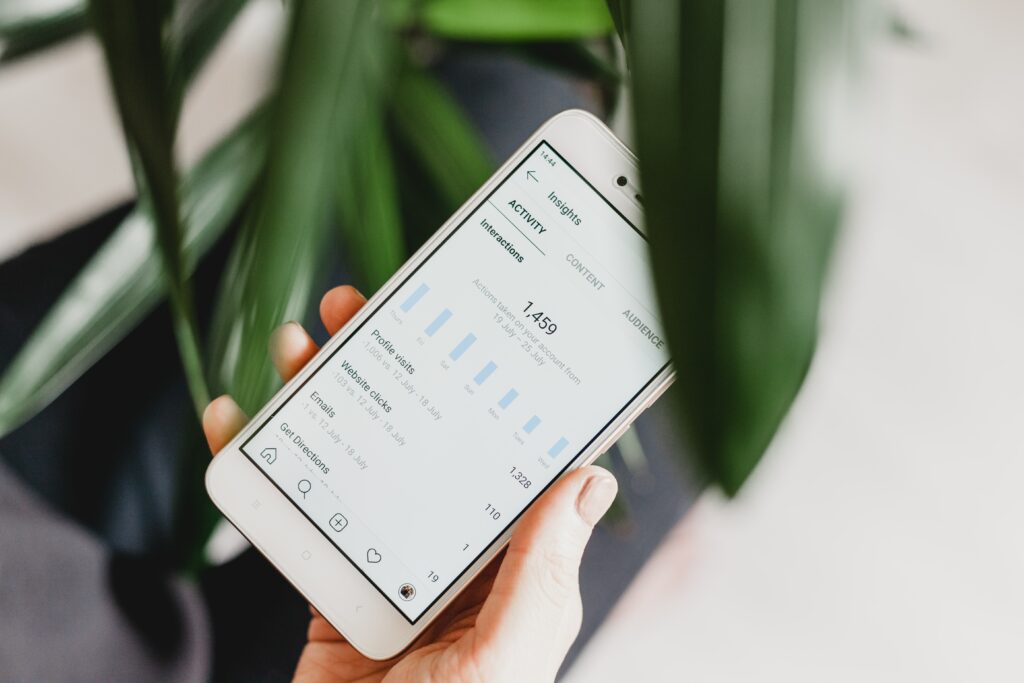We’re slightly guilty at Imaginaire of focusing pretty much solely on our two biggest selling digital marketing channels, search engine optimisation and paid advertising management, however, we always like to highlight some of the other digital marketing channels out there.
Influencer marketing is a term that has taken the marketing world by storm recently and by all accounts is set to be even bigger this year.
So, what exactly is influencer marketing?
Stripped back to its most basic form, you could say it’s simply a more up-to-date version of word of mouth marketing. It’s having a trusted individual openly and authentically endorse a brand. Whether that’s a beauty vlogger on YouTube with an audience of over a million or a bodybuilder on Instagram with a few thousand followers (Instagram Influencer).
One of the fastest-growing ‘influencer industries’ is in the travel space, with bloggers, Instagrammers and YouTubers being paid to stay at some of the top resorts in the world, in exchange for their vocal endorsements across their various channels.

The key thing that makes this type of marketing special is that the influencers have an actively engaged audience in their own specific niche. Be it fitness, fashion or food; people follow them for a reason.
We’ve all been there, right? You want to look like the gym-honed fitness guru that you follow on Instagram. Chances are, you’re more likely to buy the protein shake they use over the one advertised on the billboard (no matter how good the model looks).
What is an influencer?
Essentially, an influencer is somebody with a large social following and whose followers are engaged in their story. This can be a household-name celebrity, like the Kardashians, or it could be a respected voice within a niche, such as the fitness industry.
What are the key factors that make the social influencer channel set to explode this year?
It gets noticed
Simply put, this form of marketing gets attention. People don’t look at billboards anymore and tv adverts have just become grey noise. This is because our attention is increasingly focused online where the bloggers, Instagrammers and YouTube stars are. The individuals who have an audience that is engaged with their story or lifestyle. Followers want to hear about the new makeup line they recommend or that hip restaurant they visited.
Think about it, when was the last time you bought (or seriously considered buying) that affordable skirt your favourite blogger looked great in? This type of endorsements get brands noticed much more than in magazine adverts or billboards.

This was certainly the case for ecommerce clothing website Lord and Taylor. They tapped into this and partnered with 50 popular fashionistas on Instagram who were all asked to wear the same dress over one weekend. Due to the exposure on so many feeds, the dress was sold out by Sunday. Now if that’s not getting noticed, I don’t know what is.
It’s not spam
Unlike age-old email campaigns designed to fire out a message in the hope that someone takes notice (fingers crossed), the influencers who accept offers to endorse the brands do so tentatively.
They are cautious not to annoy their followers by bombarding them with a random flurry of product endorsements. It’s important to them that when they recommend something, it must be authentic and fit within their niche or story. Therefore, when a yoga teacher with 12,000 followers tells her audience about the hot new yoga mat on the market, they listen. This has a totally different impact to a brand spamming your inbox, bombarding you with some random flash sale.
The ROI is too good to ignore
It’s becoming increasingly apparent that influencer marketing is surpassing the more traditional forms of digital marketing. Especially where ROI is concerned.
A study back in 2014 found that marketers were seeing a return of $6.50 for every $1 spent, which is a pretty staggering figure. In a later study conducted in 2016, Tapinfluence found that influencer marketing content sees an ROI 11 times higher than more traditional forms of digital marketing. These are serious statistics which provide cold hard evidence for this approach.
It’s defiant
Influencer marketing overcomes the issues traditional marketing channels are beginning to face. For example, 47% of ecommerce customers use adblock technology. This, therefore, undermines the success of the more traditional pop-up ads which were once a key channel for many brands.
It has become increasingly clear that people do not want to read ads which pop up and rudely interrupt their browsing. In fact, many people would be inclined to disregard said brands for this inconvenience. The way to reach customers and compel them to try out a brand is to provide content they are interested in from people they trust.
The verdict
Taking all the above into account, it’s safe to say that influencer marketing is certainly growing. Given the proven ROI and strength of third party endorsement, it’s a trend that is only going to get bigger. When asked in a survey, 92 percent of people said that they trust recommendations from individuals more than brands. Therefore, proving that influencer marketing is crucial.
Marketers are also increasingly getting on-board with this trend. In a recent report, with 95% said that it is an ‘effective part of their overall strategy.’
In short, influencer marketing has taken the internet by storm over the past couple of years. It has been tried and tested and based on the success countless brands have had, it’s only set to grow.
Extra Brownie Points: How to build an influencer marketing strategy of your own
The chances are, you’ve been reading this post with interest because you’re interested in building an influencer strategy for your own company. Well, although this is by no means an exhaustive guide, hopefully, we’ll be able to point you in the right direction.
To build an effective influencer strategy, you’ll need to have a plan for:
- Which social channel(s) fit best with your brand;
- How to identify influencers and whether they have an audience that’s engaged in what they post;
- What kind of budget you’re willing to dedicate to this channel;
- How to reach your target influencers.
Which social channels fit your brand?
This is something that you should have a pretty good gut instinct for already. We tend to find that products in the fashion/clothing industry work best with Instagram, if it’s a piece of fitness equipment or something similar, then YouTube works well.
It’s important to gain an understanding of which social channels work best for you and there’s an element of testing here.
How to identify influencers
One of the easiest ways to judge who are the influencers in a niche (and also the way that trips most people up) is to look at follower counts/subscribers. The reason that this trips people up however is that the numbers can be faked, with thousands of followers being available to buy for very low prices.
There are some great tools out there for finding influencers in different niches, followerwonk does a great job of finding Twitter influencers.
We always think a bit of manual research is well worth your time here as well though, as you can go through the profiles and see whether they have an engaged audience or not. If an ‘influencer’ has 20,000 followers, but nobody commenting or liking their photos, the chances are you should steer clear.
Our very basic initial criteria for creating a shortlist of influencers goes as follows:
- Follower count is over 10,000
- Each post gets a good amount of likes and comments in relation to their follower numbers (i.e. someone with 100,000 followers should be getting a lot of comments on their posts)
- They haven’t completely spammed their account to death – if every other post is a product endorsement then the chances are, their audience won’t be that interested to see your product
One of our favourite tools for influencer marketing is Grin. Grin is influencer marketing software built for brands & agencies. Grin’s tool streamlines influencer recruitment, campaign briefing, content aggregation, reporting & payments for companies interested in scaling their influencer marketing efforts. For agencies, Grin is especially helpful in pitching campaigns to clients and maintaining a strong opt-in network of your best influencers so you can work with them time & time again.
Budgeting for an influencer strategy
One of the biggest reasons that influencer marketing hasn’t been saturated is that it costs money to gain traction. Generally, influencers will charge on a per post basis, and this can start to add up.
There are different ways to go about paying influencers and a lot of this is down to how they usually operate. We’ve always found a good way to get them on board is to offer an upfront fee for a schedule of posts and then to provide an affiliate code that their followers can use in exchange for a discount and you can then pay them a percentage of sales generated. Of course, not all influencers will be interested in this, but it’s always worth offering and the smarter cookies will see it as a business opportunity.
A good way to budget for an influencer strategy is to contact the key influencers that you’ve researched and get an idea of their charges. You can then work out whether it’s affordable for your business or not.
Typically, we see customers spending between £2,500 and £10,000 per month on influencers.
How to reach influencers
This will vary wildly, depending on the industry/niche that you’re targeting and the stature of the influencers.
If you’re targeting celebrity influencers, the chances are that you will be dealing with agents or management companies and not the celebrity directly. Usually they have the details of their management listed on their various bios.
If the influencer is more a niche influencer, they will usually have a link to their website or their own email address listed.
Influencer Marketing: Done for You
This is the advertising bit… we completely get that some people and brands will want to pursue an influencer marketing strategy on their own, but if you’d prefer to leave it in the hands of the experts, get in touch and we’ll be happy to discuss your goals and our approach.
Imaginaire is a digital agency in Dubai that helps clients generate more sales from their online presence.


